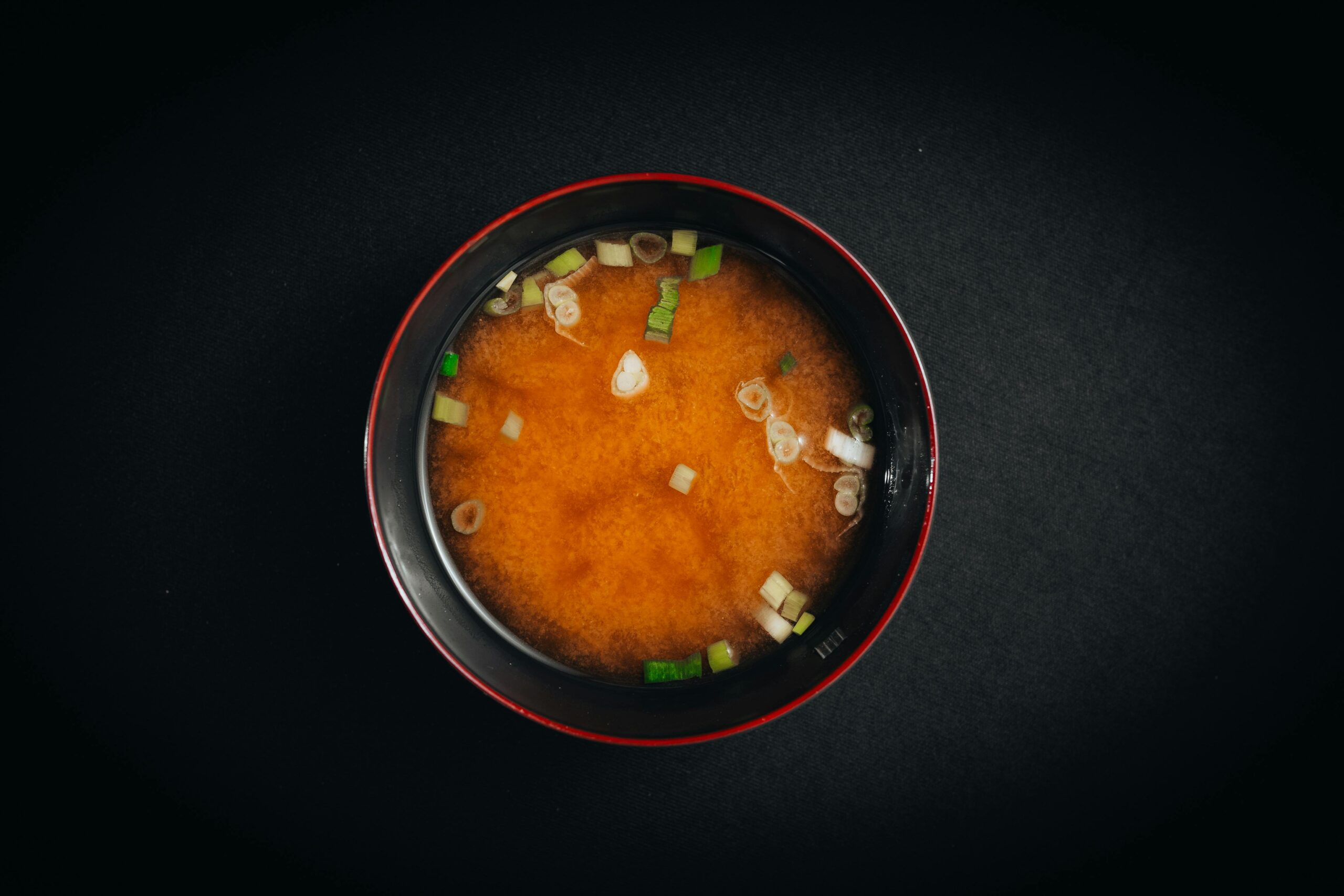Miso soup is a beloved staple in Japanese cuisine, cherished for its comforting warmth and savory depth. This versatile dish is not only a delicious start to any meal but also a delightful way to explore the rich flavors of miso paste, seaweed, tofu, and more. Whether you’re a seasoned cook or a kitchen novice, crafting the perfect bowl of miso soup is a simple yet rewarding culinary endeavor. In this guide, we delve into the essentials of making classic miso soup and explore various exciting twists to suit every palate.
Essential Equipment for Making Miso Soup
To prepare miso soup, you don’t need a lot of specialized equipment. Here are the basics to get you started:
- Medium saucepan: Ideal for simmering your soup base.
- Whisk or wooden spoon: Useful for dissolving miso paste smoothly into the broth.
- Ladle: For serving the soup.
- Fine mesh strainer (optional): Helps remove any undissolved miso paste for a smoother texture.
Flavor Profile of Miso Soup
The flavor of miso soup is deeply umami, with a salty and slightly sweet profile that varies depending on the type of miso paste used. White miso offers a mild, sweet flavor, while red miso provides a more robust, salty taste. The addition of ingredients like seaweed, tofu, and green onions further enriches the soup’s complexity, offering a satisfying balance of flavors.
Classic Miso Soup Recipe
This classic miso soup recipe is a great starting point for anyone looking to master this traditional dish. It’s simple, quick, and delicious.
Ingredients
- 4 cups dashi stock
- 3 tablespoons white miso paste
- 1/2 cup cubed tofu
- 1/4 cup chopped green onions
- 1/4 cup wakame seaweed, rehydrated
Method
- Heat the dashi stock in a medium saucepan over medium heat until it begins to simmer.
- Reduce the heat to low and add the miso paste. Whisk gently until the paste is fully dissolved.
- Add the cubed tofu and rehydrated wakame seaweed to the pot. Simmer for an additional 2-3 minutes.
- Remove the saucepan from heat and stir in the chopped green onions.
- Serve hot, garnished with additional green onions if desired.
Variations of Miso Soup
While the classic recipe is a staple, there are numerous variations that introduce new flavors and textures. Here are some popular options:
Quick Miso Soup Recipes
For those who are short on time, quick miso soup recipes offer the same comforting flavors with minimal preparation.
Instant Miso Soup
- 2 cups water
- 2 tablespoons instant dashi granules
- 3 tablespoons miso paste
- 1/2 cup sliced mushrooms
- 1/4 cup chopped spinach
- Bring water to a boil in a saucepan and dissolve the dashi granules.
- Reduce the heat, add miso paste, and stir until dissolved.
- Add mushrooms and spinach, cooking until the spinach wilts.
- Serve immediately.
Vegetarian and Vegan Miso Soup Options
For those following plant-based diets, miso soup can easily be adapted to suit vegetarian and vegan preferences.
Vegan Miso Soup
- 4 cups vegetable broth
- 3 tablespoons red miso paste
- 1/2 cup cubed firm tofu
- 1/4 cup sliced shiitake mushrooms
- 1/4 cup chopped kale
- Heat the vegetable broth in a saucepan until simmering.
- Add the miso paste, stirring until dissolved.
- Include tofu, mushrooms, and kale, simmering for 5 minutes.
- Serve hot, garnished with sesame seeds if desired.
Miso Soup with Tofu and Greens
This version of miso soup highlights the fresh taste of greens alongside the creamy texture of tofu.
- 4 cups dashi stock
- 3 tablespoons white miso paste
- 1 cup cubed silken tofu
- 1/2 cup baby spinach leaves
- 1/4 cup sliced green onions
- Simmer the dashi stock in a saucepan over medium heat.
- Add the miso paste, whisking until smooth.
- Add the silken tofu and spinach, cooking gently for 3 minutes.
- Stir in green onions and serve.
Miso Soup with Seaweed
Seaweed adds a delightful texture and flavor to miso soup, enhancing its umami quality.
- 4 cups water
- 3 tablespoons miso paste
- 1/4 cup dried wakame seaweed, rehydrated
- 1/2 cup sliced daikon radish
- 1/4 cup chopped scallions
- Bring water to a gentle boil, then reduce heat.
- Add miso paste, stirring until fully dissolved.
- Include wakame and daikon, simmering for 5 minutes.
- Top with scallions and serve warm.
Common Mistakes & Fixes
Crafting the perfect miso soup can sometimes be tricky. Here are common mistakes and how to fix them:
- Overheating miso paste: Miso should not be boiled as it can lose its flavor and beneficial probiotics. Always dissolve miso paste over low heat.
- Incorrect miso type: Using the wrong kind of miso can alter the soup’s flavor. Adjust the amount based on the miso’s strength.
- Too salty: If the soup is too salty, add more dashi or water to balance the flavors.
Storage and Reheating Tips
Miso soup is best enjoyed fresh, but it can be stored and reheated if needed. Follow these tips for optimal results:
- Refrigeration: Store leftover miso soup in an airtight container in the refrigerator for up to 3 days.
- Reheating: Gently reheat the soup on the stove over low heat, avoiding boiling to preserve flavor and texture.
- Freezing: Miso soup can be frozen, but it’s best to freeze the broth separately from add-ins like tofu and seaweed, which can become mushy.
Miso soup is a versatile and comforting dish that can be tailored to suit a variety of tastes and dietary preferences. By understanding the fundamentals of making miso soup and exploring different variations, you can create a personalized bowl of this classic Japanese staple. Whether enjoyed as a quick snack or a thoughtful starter, miso soup offers a delightful taste of Japanese culinary tradition that can be savored in every spoonful.

